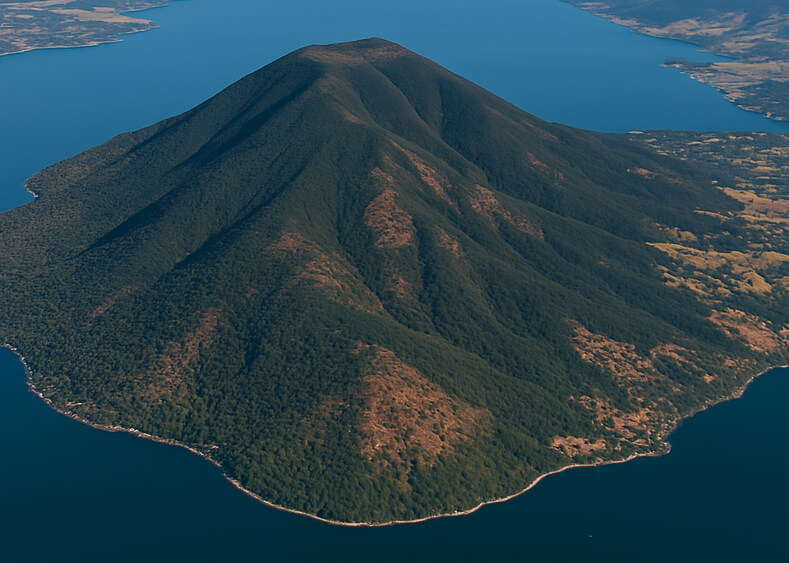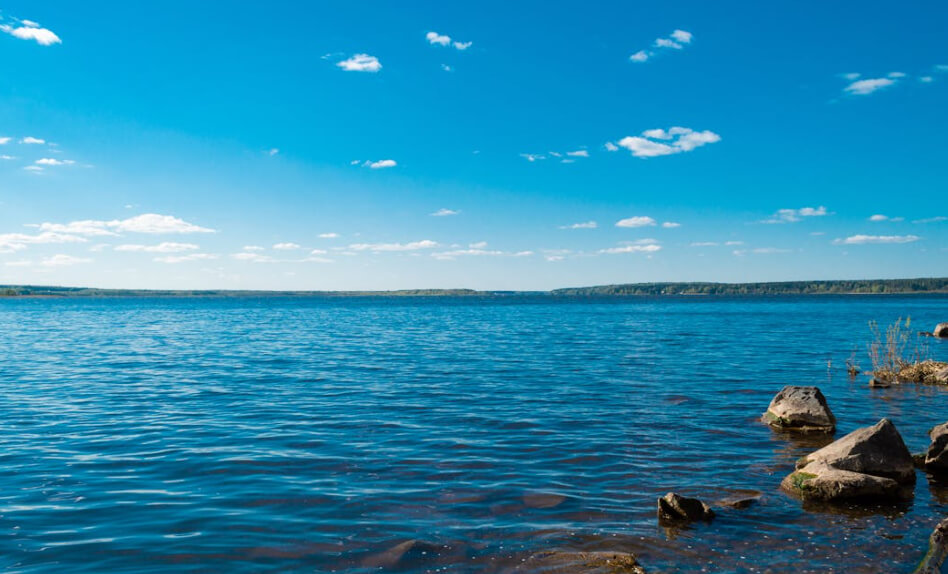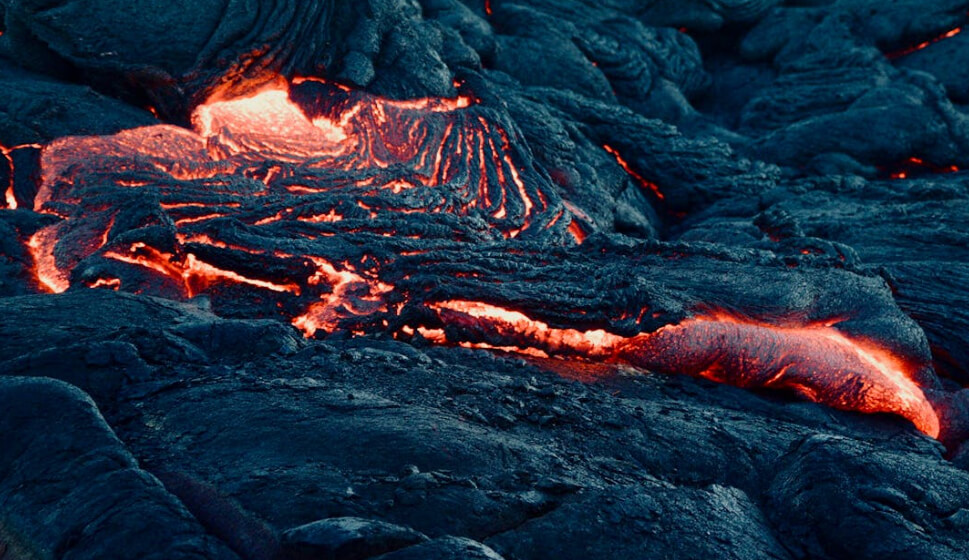Is Clear Lake a Volcano?
Well, you wouldn’t guess it just by looking. Clear Lake sits there all calm and glassy, with tree-covered hills sloping gently into the water and vineyards dotting the countryside. Feels like the kind of place where nothing dramatic ever happens. Unless you count the occasional speedboat.
But beneath that quiet surface? Heat. Pressure. A sleeping giant that’s still breathing.

Clear Lake isn’t just a lake. It’s part of something much older, much deeper, and yes, a little bit volcanic. Just don’t picture Mount St. Helens. This one plays it quieter.
Yes – Clear Lake is a Volcano. Kinda
Clear Lake sits right in the middle of the Clear Lake Volcanic Field, a zone of scattered volcanic features covering about 400 square miles in Northern California. Instead of a classic mountain-shaped volcano, though, this field is made up of lava domes, maars (crater lakes formed by steam explosions), cinder cones, and ancient lava flows. It’s part of a bigger geological region called the Coast Range volcanic province, which connects with the Geysers geothermal area to the south.

The volcanic field has been active for over 2.1 million years, though the activity hasn’t been constant. Some of the most significant eruptions happened between 600,000 and 10,000 years ago, including the formation of Mount Konocti, a prominent lava dome that still looms over the lake. It’s one of several landmarks that shape what Clear Lake is known for, both geologically and culturally.
Mount Konocti itself is estimated to be about 300,000 years old, and it’s the most visible reminder of the region’s fiery origins.

What’s unusual here is the blend of volcanic and tectonic activity. The area sits along the junction of multiple faults, which adds more instability to the system. This mix of magma movement and crustal shifting has created a complicated underground structure — plenty of fractures and fluid channels that keep things hot and moving, even if nothing’s erupted recently.
Unlike typical volcanic fields that cool off and settle down, this one still shows signs of unrest. Scientists have detected shallow magma chambers, some less than 10 kilometers below the surface. Those chambers are part of what keeps the area geothermally active, feeding both the Geysers power plant and the low-key rumblings that sometimes register on seismographs in the region.
Is Clear Lake an Active Volcano?
Yes. Just not in the way people expect when they hear the word “active.”
Clear Lake’s volcanic field hasn’t erupted in roughly 11,000 years, which might sound like ancient history, but in geologic terms, that’s still considered active. The United States Geological Survey (USGS) classifies a volcano as potentially active if it has erupted in the last 10,000 to 12,000 years. Clear Lake just barely squeaks into that window.

What keeps geologists on their toes here isn’t lava — it’s what’s happening underground. Heat flow in the region is unusually high. Measurements show elevated ground temperatures and consistent gas emissions, including carbon dioxide and hydrogen sulfide, leaking up through the soil and lakebed. These are subtle signs, but they mean that magma still exists beneath the surface, slowly shifting and heating the crust.
In fact, the area gets regular microquakes — tiny earthquakes often too small for people to feel, but big enough to show that the ground isn’t still. Add in the active geothermal systems nearby, and the picture becomes clear: Clear Lake might not be erupting, but it’s far from dead.
Signs of Heat – Geysers and Hot Springs
Despite the name, there are no natural geysers anywhere near Clear Lake. The name “The Geysers” stuck because early explorers saw steam and bubbling springs and figured it looked close enough. What they didn’t know was that they were standing over one of the most geologically active steam fields in North America.
The Geysers is a massive geothermal field tucked into the Mayacamas Mountains, southwest of the Clear Lake Volcanic Field. It spans about 45 square miles across Lake, Sonoma, and Mendocino counties and has been producing commercial power since 1960. Today, it’s home to 18 geothermal plants that collectively generate around 835 megawatts of electricity — enough to power several counties, including Sonoma and Napa.
The heat source is a large underground mass of volcanic rock called “the felsite,” which lies just a kilometer or so beneath the surface. It likely formed about 1.3 to 1.4 million years ago, matching the age of the surrounding volcanic features. What’s interesting is that this buried magma body is probably larger than all the material ever erupted at the surface. It’s what keeps the steam reservoirs hot, and it’s directly tied to the old volcanic plumbing system of the Clear Lake area.
There are no Yellowstone-style geysers or colorful pools here, but geothermal activity is still easy to spot. Steam pours from industrial pipes, the ground stays warm in places, and gas seeps continue to rise in isolated pockets. All of it points to a deep heat engine that hasn’t cooled off yet.
Should We Worry?
Not really. But it’s worth keeping an eye on.
Clear Lake’s volcanic field isn’t showing any signs of immediate trouble. No rising magma, no major ground deformation, no sudden gas spikes. The area is under regular watch by the USGS, and it’s one of the best-studied volcanic zones in California because of its geothermal importance.
That said, the system isn’t dead. The magma beneath the surface is still active enough to fuel steam production and trigger the occasional microquake. If something were to shift — like new magma moving upward or significant changes in gas release — scientists would catch it early. That’s the upside of having infrastructure and monitoring already in place.

For locals, it means living near a geologically active zone that’s been mostly quiet for thousands of years. It is fair to wonder if it is safe to swim in the Clear Lake. The odds of a major eruption in our lifetime are low, but not zero. It’s a bit like living near the San Andreas Fault. Part of the landscape, part of the deal.
So should we worry? No. But we should respect what’s under our feet. It’s not just a lake. It’s a simmering reminder that the Earth is still cooking, even in the quiet places.
